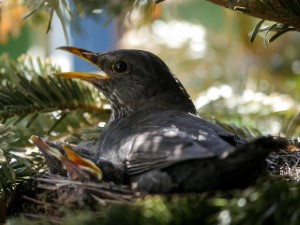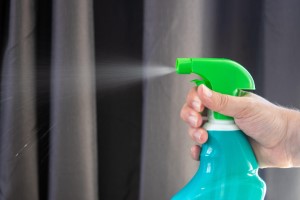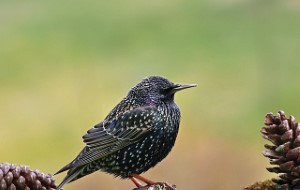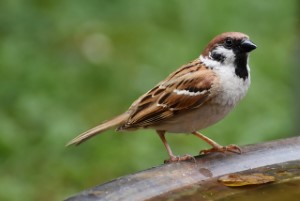BIRDS
BIRDS (AVES) - LONG ISLAND, NEW YORK
Nassau County Nuisance Wildlife Removal Services offers professional bird control and removal services to homeowners and businesses in Nassau County, New York. Many Long Islanders appreciate the presence of birds in and around their properties. There is great avian diversity on Long Island, which is inhabited by about three hundred fifty species of birds for birdwatchers to observe. Sadly, birds can become a significant problem for Nassau County home and business owners. In addition to becoming an unsightly mess, bird droppings are very acidic and corrosive. Bird feces can damage roofs, car paint, and monuments and pose a health hazard. Avian nests can be an eyesore and clog gutters, drains, and vents. Constructed in electrical signs, chimneys, stove vents, and dryer vents, bird nests can create a fire hazard and a breeding ground for bird mites and carpet beetles. Nassau County Nuisance Wildlife Removal Services provides bird nest removal and Nassau County pest control services. Although Canadian geese, woodpeckers, herons, cranes, seagulls, vultures, ducks, pheasants, swans, and turkeys may become a nuisance on your property, these animals are legally protected by federal and state conservation laws. Consequently, our bird control and removal program is restricted to three species of birds: Pigeons, English Sparrows, and Common Starlings.

BIRD CONTROL STRATEGIES LONG ISLAND, NEW YORK
Bird control methods consist of physical obstacles, electrical shock systems, visual repellents, trained birds of prey, contraceptives, and visual and chemical repellents. The avian control devices that are most feasible either physically block the birds or actively modify behavior using a mild electrical shock. Physical bird repellents include bird netting and pigeon spikes. Electric shock systems avert birds from landing or nesting in unwanted areas. The electrically charged tracks emit a mild electrical shock when birds land on them. The electrical shock doesn't harm the birds and trains them to avoid the area. Electric track systems are a low-key and almost invisible solution that keeps nuisance birds off building ledges and other surfaces. Electric track systems are a highly favored option when structural aesthetics are essential. Avian contraceptives block sperm from fertilizing the egg; consequently, no embryo is ever formed. Chemical repellents consist of polybutylene gels, avicides, and taste-aversion products for geese. Polybutylene gels can be applied to ledges or beams to stop birds from roosting on them. Birds usually quickly accommodate stationary avian control devices, such as plastic owls and scarecrows, making them ineffective avian control methods. Sonic and ultrasonic devices have been used to eliminate unwanted nuisance birds but have not been effective. Products that produce predator and distress calls from various birds have also been used, but studies have demonstrated that nuisance birds will habituate to and disregard these devices.

NUISANCE BIRDS OF NASSAU COUNTY, NEW YORK
PIGEON {COLUMBIDAE)
There are three hundred forty-four species of pigeons. Pigeons can be found worldwide, except for the driest areas of the Sahara Desert, Antarctica, the islands surrounding it, and the high Arctic. Scientifically, there is no difference between pigeons and doves. A dove is a white pigeon, and both pigeons and doves are members of the Columbidae family. Pigeons were brought to North America by early European settlers and can be found in almost every city, town, or suburb on the continent. Pigeons are social animals that live in flocks and primarily feed on grains, seeds, fruits, and insects. Pigeon nests, a combination of twigs and leaves, are commonly built on rooftops, window ledges, under bridges, and behind signs. Parents take turns incubating the pigeon eggs, and both parents feed the hatchlings.
PIGEONS: SENSES AND INTELLIGENCE
Pigeons have excellent eyesight and acute hearing. They can navigate via magnetoreception, which allows them to detect the Earth's magnetic field. According to researchers, the brain of a pigeon contains special nerve cells that can detect the direction, polarity, and intensity of magnetic fields around them.
Researchers have concluded that pigeons are brilliant animals that can remember many images for several years. They can be taught relatively complex tasks and response sequences and learn to respond in different sequences. Pigeons can discriminate between other pigeons and can use the behavior of another pigeon as a cue to what action to take.

COMMON STARLING (STURNUS VULGARIS)
The Common starling is also known as the European starling. Widespread throughout the Northern Hemisphere, European starlings are native to Eurasia and are found throughout Europe, northern Africa, India, Israel, Iran, Iraq, Syria, and northwestern China. In 1890, approximately one hundred European starlings were released in Central Park, New York, and they are now one of the most abundant birds in North America. The Common starling is a highly sociable omnivorous species that consumes grains, seeds, and fruits. However, they are primarily insectivorous and prey upon spiders, beetles, flies, moths, grasshoppers, earthworms, bees, wasps, and ants. Starling nests are usually made of straw, dry grass, and twigs with an inner lining of feathers, wool, and leaves. Starlings are cavity-nesting birds that construct their nests in any type of hole, including inside hollowed trees. There usually are four or five starling eggs, and both parents share in the brooding of the eggs.
STARLINGS: SENSES AND INTELLIGENCE
European starlings have an acute vision and mimic the sounds they hear, including those of other birds. They also have an exceptional sense of taste. These birds can taste sugar, salt, tannins, and even citric acid. They can even distinguish between table sugar and other types of sugar.
Starlings are considered to be very intelligent birds and have been shown to possess numerous cognitive abilities, such as problem-solving, tool use, and vocal mimicry. European starlings have also been shown to display complex social skills, such as communication and cooperation. Overall, while it is difficult to provide an exact measurement of the European Starling's intelligence, it is clear that they are intelligent and adaptable birds.

SPARROW (PASSERIDAE)
The House or English sparrow originated in the Middle East and spread to most of Eurasia and parts of North Africa. It has reached most of the world through intentional introductions and natural and shipborne dispersal. The sparrow is the most widely distributed bird in the world. The first of many successful introductions of the sparrow to North America occurred when birds from England were deliberately released in New York City in 1852, intended to control linden moths. It was soon discovered that sparrows don't consume insects except in the first couple weeks of their life. House sparrows primarily feed on seeds and grain. In North America, the English sparrow can now be found from the northwestern regions of Canada to southern Panama, and it is now one of the most abundant social birds that inhabit the continent. Sparrows are cavity-nesting birds, and clutches typically comprise four or five eggs. Both parents feed the sparrow hatchlings.
SPARROWS: SENSES AND INTELLIGENCE
House sparrows' retinas contain 400,000 photoreceptors per millimeter, giving them double the visual acuity of humans. A Georgia State University neuroscientist discovered that the auditory systems of sparrows differ between sexes depending on the season. During the mating season, female sparrows hear better than males.
House sparrows have relatively large brains and are the most intelligent of the small birds. A study conducted at Louisiana State University found that sparrows can communicate with each other about potential environmental dangers and adapt their behavior accordingly, which explains why the little bird has thrived in cities.

BIRD NEST REMOVAL LONG ISLAND, NEW YORK
Avian Inspection - This is the first step in removing and controlling nuisance birds. Avian experts from Nassau County Nuisance Wildlife Removal Services will ascertain the species of bird and the best wildlife control strategy for managing it.
Bird Trapping - Bird traps are equipped with one-way doors that allow the birds to enter but not exit. Bird traps are frequently used to trap pigeons and sparrows.
Bird Spikes - These are used to humanely prevent pigeons from roosting. Nassau County Nuisance Wildlife Removal Services installs stainless steel pigeon spikes from landing and nesting on ledges, window sills, air conditioners, roof lines, and beneath eaves.
Bird Exclusion - English Sparrows and Common Starlings are both cavity-nesting birds. Starlings will utilize any opening they can fit through, provided it leads to an appropriately sized cavity. Bathroom exhaust fan vents, clothes dryer vents, stove vents, and attic gable vents must be screened to exclude birds. House Sparrows will construct their nests in window or wall air conditioners. English Sparrows frequently enter Long Island residences through the space below through-the-wall air conditioners and build their nests inside the wall. In such cases, the air conditioner must be removed to eliminate the birds and nesting material and treat for bird mites. This space must be blocked or screened to keep English Sparrows out. Decreasing the number of nesting sites these nuisance birds can utilize is crucial to controlling and limiting their population.